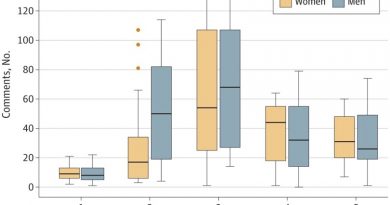How does EMDR therapy help people who have experienced trauma?

Earlier this year, Prince Harry revealed he has used a therapy called EMDR to cope with anxiety and trauma, including trauma resulting from his mother Princess Diana’s death when he was 12.
He demonstrates the technique in the Apple TV+ docuseries The Me You Can’t See.
EMDR stands for eye movement desensitization and reprocessing. But what is this therapy and how does it work?
What is EMDR?
EMDR is a psychotherapy treatment that aims to reduce distressing emotions associated with traumatic memories.
It involves consulting with a trained psychologist, usually over about 12 sessions.
https://youtube.com/watch?v=QGiqBazdPGw%3Fcolor%3Dwhite
Broadly speaking, the sessions involve eight steps:
- History and treatment planning: the psychologist will discuss the patient’s specific reason for coming and take a detailed history
- Preparation: the psychologist will talk to the patient about what they can expect from EMDR. In this phase, the psychologist will also teach the patient relaxation techniques they can use to calm themselves during or after sessions
- Assessment: the psychologist will ask the patient to select a vivid image in their mind relating to the memory they wish to work on. The patient will also be asked to focus on any negative beliefs about themselves, or negative emotions associated with the event
- Desensitization: the patient will be asked to hold the traumatic memory in their mind while following the movements of the psychologist’s finger back and forth with their eyes. The psychologist may also lead the patient in tapping (for example, the patient taps their knees with their hands in an alternating pattern) or auditory tones delivered through headphones. These alternatives to eye movements engage the same parts of the brain
- Installation: the patient is guided to replace the original negative belief with a positive one
- Body scan: the patient thinks of the original memory to see if there is any physical tension remaining in the body. Usually the memory processing is complete when the memory no longer causes the patient any distress. If it still does, step 4 will be repeated
- Closure: this is the end of the session. If the memory has not yet been completely reduced in intensity, the psychologist will guide the patient in relaxation exercises to do until the next session
- Reevaluation: this is the start of the next session, where the psychologist and the client assess the previous session’s work and reevaluate the treatment plan as needed.
The therapist continually checks in with the client throughout the process.
An important phase at the end of treatment involves looking to the future. The psychologist might ask the patient to imagine an anticipated challenge.
For example, if the patient had been in a car accident, they might imagine driving on a highway, perhaps at night or alone, and see if any distressing emotions arise. If they do, the patient might still need some more treatment.
A unique aspect of EMDR is that the person may not have to discuss any of their disturbing memories in detail. The psychologist may ask “What event do you remember that made you feel distressed?” and the patient may say, “It was something my father did to me.” The process can be done without any extra information.
How does EMDR work? And who can use it?
The dual activity of thinking about a distressing memory and rapidly moving the eyes from side to side appears to reduce the level of emotion in the memory.
One theory is that thinking about a traumatic memory and following something with the eyes requires more memory capacity than is available, therefore the distressing memory is not completely accessed and loses its strength.
EMDR therapy is most commonly used to treat traumatic stress symptoms and post-traumatic stress disorder (PTSD).
A review of 26 clinical trials showed EMDR treatments significantly reduced symptoms of PTSD, depression, anxiety, and distress in people with PTSD.
The use of EMDR in children with PTSD has been demonstrated to be effective too.
People with phobias or anxiety concerns can also benefit, as can people with depression.
While the research suggests EMDR is an effective approach to reducing trauma, there may be some risks or side effects involved. These include:
- an increase in distressing memories
- heightened emotions or physical sensations during sessions
- light-headedness
- vivid dreams
- the surfacing of new traumatic memories.
Should any of these occur, the treating psychologist would typically support the patient to process these during the sessions.
Is EMDR recognized?
The World Health Organization and the International Society for Traumatic Stress Studies both recommend EMDR therapy as a treatment for adults and children with PTSD.
Source: Read Full Article



